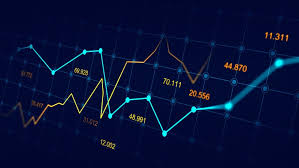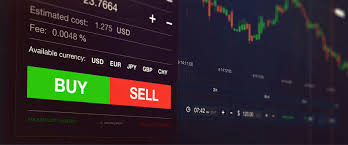
The Revolution of Forex Algorithmic Trading: Strategies, Tools, and Future Trends
Forex algorithmic trading has become one of the most influential elements in the landscape of modern finance. Thanks to advancements in technology and the proliferation of data, traders now have the capability to automate their trading strategies to maximize efficiency and minimize emotional decision-making. This article delves into various aspects of forex algorithmic trading, including its strategies, necessary tools, and potential future trends. For more insights in this domain, consider visiting forex algorithmic trading Trading Asia.
What is Forex Algorithmic Trading?
At its core, forex algorithmic trading involves the use of computer programs to execute trades based on predefined criteria. These algorithms analyze market conditions and execute trades at speeds and frequencies that are impossible for a human trader to match. This technological approach not only streamlines the trading process but also implements sophisticated strategies far beyond manual capabilities.
Key Advantages of Forex Algorithmic Trading
There are multiple advantages to using algorithmic trading in forex:
- Speed: Algorithms can process vast amounts of data and execute orders in milliseconds, capitalizing on price discrepancies.
- Emotionless Trading: By relying on algorithms, traders can eliminate emotional biases that often interfere with trading decisions.
- Backtesting: Algorithms can be tested against historical data to evaluate their efficiency and potential profitability.
- Diversification: Automated trading allows the simultaneous management of multiple accounts and portfolio diversification.
Algorithmic Trading Strategies
Various strategies can be implemented in forex algorithmic trading, each with distinct mechanisms and objectives. Some of the most common strategies include:
1. Trend Following
This strategy is based on the assumption that prices will continue in a particular direction. Algorithms are programmed to identify trends and open positions in their favor.

2. Arbitrage
Arbitrage strategies exploit price discrepancies between different markets or instruments. Algorithms are designed to quickly execute trades before the price convergence occurs.
3. Mean Reversion
The mean reversion strategy operates on the premise that Highs and Lows will eventually return to their average prices. Algorithms track moving averages to find entry and exit points.
4. Market Making
Market-making strategies involve placing buy and sell orders at both sides of the market. Algorithms continuously adjust these orders to profit from the spread.
The Tools of Forex Algorithmic Trading
To successfully implement algorithmic trading, traders need various tools and platforms that can facilitate the design, testing, and execution of their strategies. Some of the commonly used tools include:
- MetaTrader 4/5: A popular trading platform offering built-in tools for algorithmic trading, including technical indicators and automatic trading features.
- TradingView: A web-based platform that provides advanced charting tools and allows traders to create their custom scripts using Pine Script.
- QuantConnect: An open-source algorithmic trading platform that enables users to develop and backtest strategies using historical data.
- Interactive Brokers API: A powerful API that provides access to trading functionalities and market data, enabling custom algorithm development.
Oversight, Risks, and Considerations
Despite the benefits, forex algorithmic trading is not without its risks. Traders using algorithmic systems must always remain mindful of the following considerations:

- Market Conditions: Rapidly changing conditions can affect algorithm performance and introduce unexpected risks.
- Technical Failures: Software bugs, internet outages, and hardware malfunctions can lead to significant financial losses.
- Over-Optimization: Creating an algorithm that performs excellently on historical data may not translate to future performance.
Future Trends in Forex Algorithmic Trading
The landscape of forex algorithmic trading is continuously evolving, and several trends are emerging that will shape the future of trading:
1. Artificial Intelligence and Machine Learning
Integrating AI and machine learning will allow algorithms to adapt to market changes in real-time, enhancing their decision-making capabilities.
2. Increased Regulation
Governments and regulatory bodies are likely to introduce more stringent regulations to ensure fair trading practices and protect investors.
3. Decentralized Finance (DeFi)
The rise of decentralized finance could alter the landscape of forex trading, enabling algorithmic trading strategies on decentralized platforms.
Conclusion
The adoption of algorithmic trading in the forex market offers traders unparalleled benefits in speed, efficiency, and data analysis. While it comes with its set of challenges, the continued evolution of technology and tools will make it a fundamental paradigm in trading. Those looking to excel in this field must stay informed about strategies, risks, and emerging trends.
